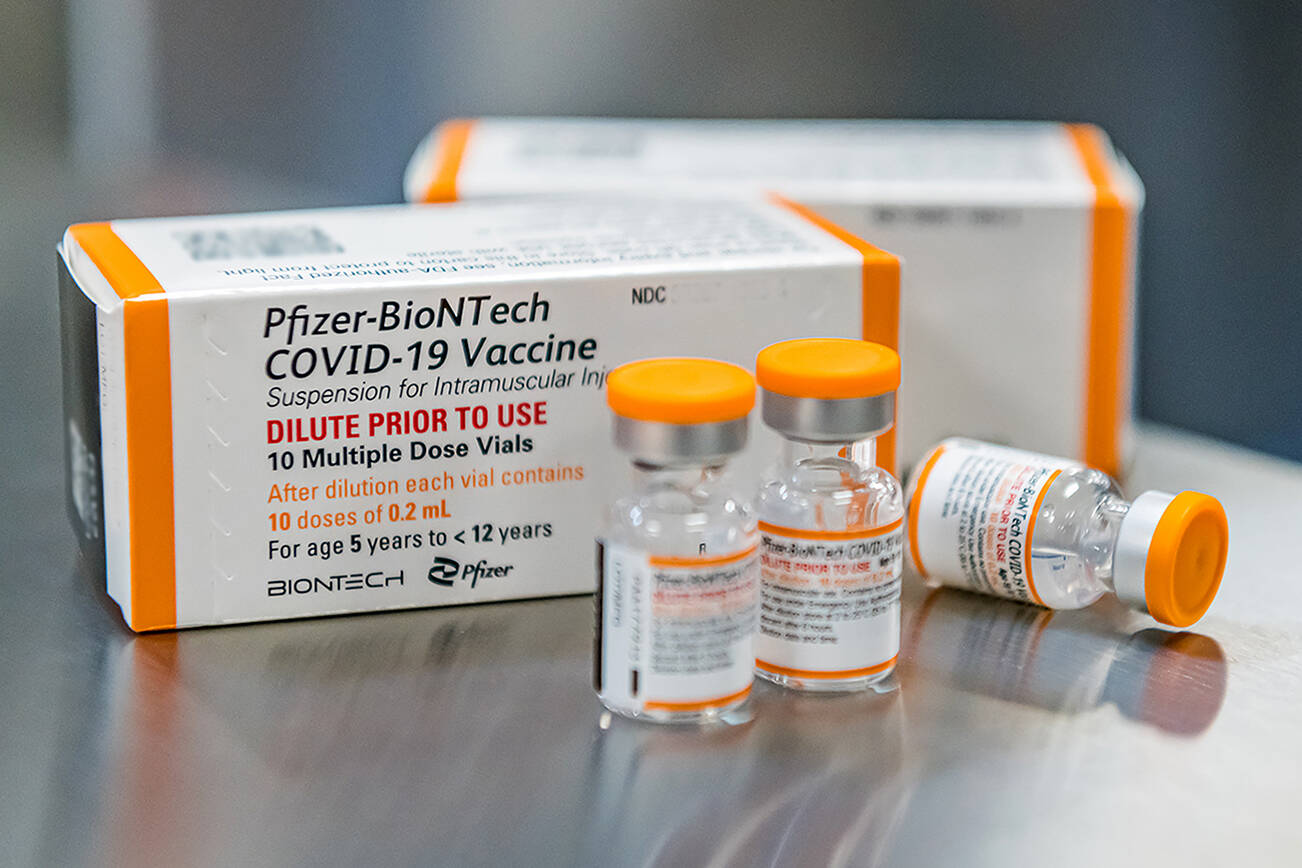OKANOGAN – There has been another death of a county resident from COVID-19, as well as an increase of the two-week COVID-19 Incident Rate to 996 in 100,000 of population, according to Okanogan County Public Health’s Jan. 17 update.
The number of county residents who have died from the virus since the pandemic began is now 78.
“Okanogan County Public Health is saddened to report a COVID-19 related death in today’s data update,” said the agency last Friday when they announced the new death. “One female in her 70s passed away recently. Her vaccination status is unknown at this time. We extend our condolences to her family and community members who were close to her.”
All reported deaths of Okanogan residents attributed to COVID-19 were verified by death certificate, testing, and other case information, said Public Health.
The new incident rate is nearly triple the previous week’s rate of 355 in 100,000 in population. While the symptoms of the omicron variant appears be less harmful than the delta variant, especially for those who are fully vaccinated, it is spreading at about 10 times the rate of its predecessor.
“While OCPH is reporting a large number of breakthrough cases this week, the vaccines continue to provide excellent protection against severe illness from COVID-19,” said the agency.
The cumulative total since testing began is 6,222. Breakthrough cases, positive cases in fully vaccinated people since December 2020 increased to 389 (up 45). The total number of people from the county reported to have tested positive in the past 14 days is 430. In the three day period prior to Monday’s update, Jan. 14-16, there were 116 new cases reported. These infections occurred in people from these areas: Omak, 11; Tonasket, eight; Oroville, five; Okanogan, four; Carlton, Nespelem and Pateros, three each; Coulee Dam, Twisp and Winthrop, two each and Malott and Riverside, one each
In Public Health’s cumulative totals for people testing positive, Omak has the highest with 1,490, up 29 since the previous 14-day update on Jan. 10. The next highest is Brewster, with 1,047 (up 25); Tonasket, 872 (up 33); Okanogan, 676 (up 21); Oroville, 659 (up 27); Twisp, 231 (up 11); Pateros, 174 (up 16); Winthrop, 158 (up 10); Riverside, 147 (up two); Nespelem, 148 (up six); Malott, 142 (up one); Coulee Dam, 119 (up 10); Carlton, 51 (up three); Elmer City, 45 (up one); Loomis, 45 (up one); Conconully, 32 (up one); “unidentified,” 28; Wauconda, 17; Methow, 14 (up one) and Mazama, 10 (up two).
The most deaths from the virus have been in Tonasket residents with 17. The next highest number of deaths attributed to COVID-19 is in Brewster, eight, followed by Omak, three and Pateros, two. The towns of Malott, Okanogan, Carlton and Oroville have had one death each. A total of 44 deaths are listed as “unidentified.”
The greatest number of positive COVID-19 cases by a large margin in the county remains in the 20-39 age group with 1,926 (up 90) and three deaths. The 40-59 age group has had 1,617 (up 61) and five deaths. Next is the 0-19 age group with 1,480 cases (up 121) and no fatalities. Those aged 60-79 have had 990 cases (up 39) and 38 deaths. Age 80 and above have had 201 cases (up four) and 12 fatalities. There were five cases and 19 deaths listed in the “unreleased” category.
Statewide
The Washington State Department of Health (DOH) reported a total of 901,887 confirmed cases as of end of day Jan. 12. There have been 10,143 COVID-19 deaths in Washington.
DOH has published a new, weekly report that provides an insight into COVID-19 reinfections. DOH is seeing an increase in the number of “vaccine breakthrough” cases related to the recent increase in overall cases statewide. Even with the increase in breakthrough infections, data continue to show that vaccination is highly protective against hospitalization and death from COVID-19.
Current reporting shows a recent 43 percent increase in the number of breakthrough cases. The increase in the number of breakthrough cases is related to the increase in the number of total cases statewide. From Jan. 17, 2021 to Jan. 1, 2022, there have been 123,365 vaccine breakthrough cases identified in Washington State. While the majority of individuals with confirmed vaccine breakthrough experienced only mild or no symptoms, at least 3 percent were hospitalized.
To date, more than 4.8 million people in Washington state are up to date on their vaccines. The breakthrough cases represent a small portion, about 2.5% of the vaccinated population.
“If you are already vaccinated, getting a booster dose of vaccine is the best way to decrease your chance of getting a breakthrough infection,” said Tao Sheng Kwan-Gett, MD, MPH, Chief Science Officer. “Even without a booster dose, those who are vaccinated are less likely to become very ill and need hospitalization, and a booster dose decreases the risk even more.”
Large-scale clinical studies have found that COVID-19 vaccines prevented most people from serious illness and hospitalization. This means a very small number of fully vaccinated people will still become infected with COVID-19. Scientists note that breakthroughs are expected with any vaccine.
A person is considered to have vaccine breakthrough if they test positive for COVID-19 using a PCR test or antigen test and received their final dose of the COVID-19 vaccine more than two weeks prior to the positive test. Additional investigations help us better understand clinical and outbreak information when vaccine breakthrough happens.
“Even though the Omicron variant has an increased ability to evade immunity from vaccination, vaccines and boosters will lower the risk that an infection could land you in the hospital,” said Dr. Kwan-Gett. “That’s why to avoid worsening the strain on our hospitals, everyone should use a high quality well-fitting mask, don’t use the emergency department unless it’s a true emergency, and most important get vaccinated and boosted as soon as you are eligible.”







